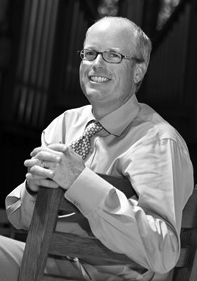Midyear reviews of residents are under way. I cherish these gatherings. We review evaluations, in-training exam scores, consider career goals, and design individual learning plans. We ponder the big picture. Where is the resident going? How are things?
This season, I found myself questioning the effectiveness of the feedback I was giving to my residents. How important is this moment in their formation as a physician? How good are we overall at giving appropriate feedback to our trainees? I gained insight to this process when I rediscovered Leonardo da Vinci and the relationship he had with Verrocchio, his mentor and teacher. How did Verrocchio give feedback to da Vinci — and was it effective?
The Art of Effective Feedback
At the age of 14, Leonardo da Vinci was sent from home to live as an apprentice to Verrocchio, a goldsmith–artist who ran a workshop in Florence. Leonardo lived with the other apprentices in rooms above the workshop. In the beginning, he pitched in with the projects of the day — mixing the paint, sweeping the floor of marble shards, and fanning the flames of the kiln. Leonardo worked hard for scant pay, but with the benefit of learning a complicated skill at the hands of a master.
Does that not describe residency training? Leonardo was Verrocchio’s resident.
A resident’s midyear review is the moment for a program director to offer feedback with support and encouragement, without the distractions of other duties. The process is meant to be formal enough to review a resident’s portfolio with the seriousness such an exercise deserves.
However, in a survey of residents that the ACGME conducts annually, “satisfied with feedback,” remains a persistent struggle. Only 72% of residency programs are compliant. The only worse score was “providing feedback about practice habits,” which came in at 70%. What is the answer? What constitutes appropriate, meaningful feedback? What should the Verrochios say to the Leonardos? How do we coach our residents so they can paint their Mona Lisas?
There is little help in the peer-reviewed literature about what constitutes meaningful, constructive feedback. The most comprehensive systematic review evaluated 16 projects. Most of the projects showed that the feedback — multisource, coaching, one-on-one — had educational value. But, the feedback did little in the way of changing behavior. An important randomized controlled trial (the only one I found) showed that residents who were given feedback showed improved communication with families, as judged by the nurses. However, the family members themselves did not detect a difference between the intervention group and standard arm.
Some feedback is probably better than no feedback, but it is hard to tell. I wonder if the answer lies not in what is said, but in how it is said.
At the Core of Effective Feedback Is Trust
Does the resident believe I have his back? That I really care about her success? The goal of feedback is always for our trainees to get better. Without this bedrock of trust, feedback will never be linked to this central goal for growth. With trust, no matter how difficult the conversation — a bad clinical outcome, a report of unprofessional behavior, a tense moment on the wards — the conversation will always be more fruitful.
To borrow from the business literature, Giving Effective Feedback, a series published by Harvard Business Review, suggests the following about effective feedback:
- It is shared frequently and in context.
- It aims to achieve a specific outcome.
- It is realistic in its expectations.
- It shows respect for the recipient.
- It is a two-way conversation.
- It is expressed as a point of view rather than an absolute truth.
- It assumes an opportunity for follow-up.
I wonder if we in medical education shirk feedback sessions because we do not do it well or frequently enough. Perhaps we associate feedback with punitive action or a bad outcome rather than coaching for improvement. These are problems that shouldn’t be too difficult to remedy.
Even Geniuses Need Coaching
Some apprentices are more talented than their teachers — an opportunity for both the trainees and the mentors to shine, though the mentors might find it difficult to see this unique challenge as an opportunity. In Verrocchio’s The Baptism of Christ, scholars believe Leonardo painted the angel holding Jesus’s cloak. As the apocryphal story goes, when Verrocchio saw the angel, he threw down his paintbrush in awe and humility, resolving never to paint again. The student had surpassed the master.
And yet, Leonardo still had a ways to go.
In his Annunciation, the scene where the angel Gabriel announces to Mary that she will become the mother of Christ, Leonardo misses the mark:
Art historians note that the garden wall is bulky and has an odd perspective. Mary’s gown drapes over her chair awkwardly, making it seem like she has three knees. The trees in the background lack the sophisticated perspective that he would exhibit in the Mona Lisa. Leonardo was good, but not yet great, and Verrocchio still served as his boss, coach, mentor, and teacher.
Like Verrocchio, I am certain that many of my residents have surpassed me in their raw talent as physicians. I am amazed at my gang. They are stellar physicians, terrific people. They launch innovative projects in narrative medicine, quality improvement, and research. They pursue interesting electives and dream big dreams. All of this while slamming out 80 hours per week on clinical duties. How do they do it?
Am I doing a good enough job as their mentor? Did Verrocchio give good enough feedback? Perhaps yes. Leonardo went on to paint the Mona Lisa and The Last Supper after all. His Vitruvian man can still be seen on T-shirts today. He was gainfully employed for many years in the Milanese court. He was the first and living definition of The Renaissance Man.
But Leonardo struggled as well. He missed deadlines regularly and walked away from contractual obligations. Several would-be-great paintings were left unfinished. Should Verrocchio have put Leonardo on a remediation plan? I think not.
Yet only art historians remember Verrocchio’s name. Everyone knows Leonardo. He must have done something right.
Effective Feedback in a Community of Learners
Leonardo lived in quarters Verrocchio provided along with his other apprentices. Because Leonardo was born out of wedlock, Verrocchio even served as a father figure.
Which brings me back to feedback — in the context of a community of learners. The apocryphal story of Verrocchio throwing down his paintbrush is widely believed to be false. In truth, Verrocchio did paint again (and he was pretty good at it), but always as a mentor, a coach, a leader. He toiled away, always with an apprentice at his elbow. They debated art, experimented, and tried new techniques. Verrocchio created a community.
I think this community element is the key ingredient for residency training. How we support one another and model curiosity and compassion are as important as the didactic lectures.
Presumably, Verrocchio’s community was successful: Leonardo lived in the studio for several years after his apprenticeship ended. Those formal moments of feedback are important — the mini cex’s, the goal setting sessions, the end of rotation feedback. It is all important, because these moments point to the richness of the community of learners, the guild, the workshop. In this guild were the elements of success — a shared vision, constant feedback, high expectations, and mutual support.
What do you think Verrocchio said to Leonardo? How effective do you feel that feedback improves learners? Have you found techniques that work for your residents? Share your experiences in the comments below.
 Benjamin R. Doolittle, MD, is an expert in burnout and wellness in residents and physicians. He is an associate professor and program director of internal medicine and pediatrics at the Yale University School of Medicine and the medical director of the Yale Medicine-Pediatrics Practice.
Benjamin R. Doolittle, MD, is an expert in burnout and wellness in residents and physicians. He is an associate professor and program director of internal medicine and pediatrics at the Yale University School of Medicine and the medical director of the Yale Medicine-Pediatrics Practice.





Is the only measure of “effectiveness” of feedback recipient emotional reaction? How would this work with speeding fines for example?? Not sure this idea is fully thought through yet. . . .
I don’t think that is what this author is suggesting.
Excellent piece. Effective feedback is timely, specific, and focused on skills and behaviors. It has to be a two way dialogue and not a monologue from the giver. I agree that trust is a huge part of the feedback process. Trust is based on the character and competence of the giver of feedback. Do you have integrity, are you humble, what’s your intent? These are the foundations of your character. What training have you done, what’s your reputation, what are your clinical and teaching results – these are the foundations of your competence. As John Wooden said so eloquently, a great coach is someone who can give correction without generating resentment. The goal is to not generate emotion – because when emotion kicks down your door, common sense, judgment, and reasoning fly out the window (yes another Wooden quote).
Bottom line, informative feedback is the forgotten piece of what constitutes being a great teacher. It’s not simply just knowing facts and effectively teaching facts or being a good role model. It’s all 3.
I want the students and residents I work with to each achieve their own personal greatness – attain the highest level of skill and competence that they are capable of achieving by putting 100% effort into everything they do – not just medicine either but in life. If they surpass my knowledge (many have) and clinical expertise (many have) even better. One of my greatest joys is seeing former students do great things. That’s the point of giving feedback, inform them that none of us are perfect. We all make mistakes, and the mark of a successful person is that you learn from them and don’t repeat them.